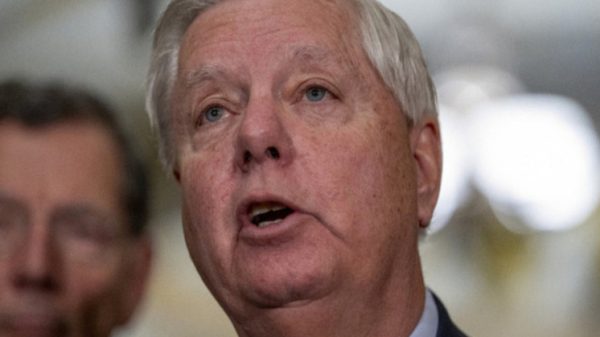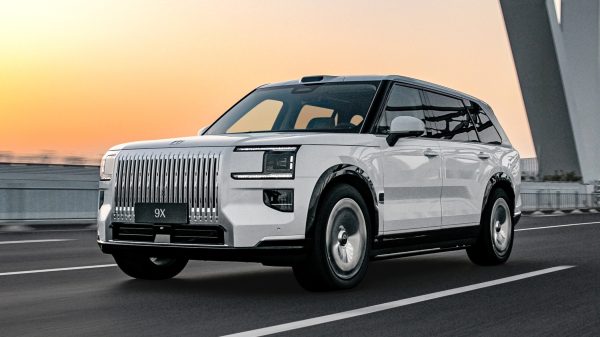The presidential race in Texas matters, and an underperformance by Mr Trump compared to recent elections could alter the political playing field
Credit: Bloomberg
Of all the battlegrounds set to determine this year’s election, Texas might just be in the most politically intriguing.
The state has been reliably red for the last three decades — since Jimmy Carter won in 1976 — and it has not elected a Democratic senator since 1988 or governor since 1990.
But now Texas is undergoing changes threatening to break that dominance, trends that have only snowballed during the Trump presidency, making the competition tighter than ever.
Why is Texas so important this year?
This matters because Texas is the second biggest state in the country. It has 38 electoral votes, second only to California, which means the way it swings has a significant impact on the election result.
A poor performance by Mr Trump compared to previous Republican candidates could alter the state’s political landscape for the next decade.
Read more: How does the US election work and what is the electoral college?
map — hub version
Record level voter turnout
Texas traditionally has one of the lowest voter turnouts, with experts claiming that it would be traditionally purple, or a swing state, if voter registration was higher.
The state is run by Republicans who have upheld voting restrictions for decades: There is no online voter registration, early voting is limited and the number of polling stations have been cut.
This year Governor Greg Abbott decreed that each county within the state may only have one place to drop off mail-in ballots. This has left counties like Harris, the size of a smaller US state and home to Houston, with a singular drop-off point, leading to crowds and long queues.
Although these restrictions have in the past lowered voter turnout, this year is set to be different: Texas has registered nearly 17 million voters.
The total for the November 3 election is 1.9 million more than the state had in 2016. Democrats believe the majority of these people will be backing blue.
More than 7 million of these people have cast a ballot so far, a record total nationally.
Read more: 70m Americans have voted by post, more than half the 2016 turnout
Demographic changes
Rapid demographic change across the state could work in Mr Biden’s favour and give the party a strong foothold.
Urban areas traditionally favour the Democrats, while rural voters tend to back Republicans. In 2016, Mr Trump won 227 of the 254 counties in Texas, while the Democrats won Houston, San Antonio, Dallas, El Paso and Austin.
For decades the balance between urban and rural Texas has not had a huge impact on its overall political leaning, but recently urban areas have begun to count for a bigger proportion of the state’s total vote.
In 1968 metropolitan areas counted for 52 per cent, growing to 60 per cent in 1996. Now, the 27 counties account for 69 per cent. The people behind the statistics are increasingly likely to vote for the Democrats.
Recent census estimates also indicate that the proportion of white residents in Houston has shrunk to below 25 per cent, with a rising Latino population possibly translating to a more liberal backing.
President Donald Trump speaks at a campaign rally
Credit: AP
What other issues are at play?
While the more rural counties have historically backed the Republicans, the tide seems to be turning.
Mr Trump is increasingly blamed by Texans for the state’s misfortunes. A total of 17,700 people in Texas have died from Covid-19, and the president’s approach is pushing him out of favour.
Republican women in particular are thought to be angry at how the Trump administration has handled the pandemic. They have suffered disproportionately in terms of unemployment, with many dissatisfied that their children have been out of the classroom.
A recent poll by the Washington Post and ABC gave Joe Biden a 23 point average with women nationwide, a total much higher than Hillary Clinton in 2016.
Texas is also the least insured state in the country, so the implications of a Trump victory for healthcare could also alter voting.
Read more: US swing states back Joe Biden over Trump as voters fear Covid-19 spread
So, could the state swing?
According to CNN polling, Donald Trump has a lead of 48 per cent ahead of Joe Biden’s 45 per cent.
This lead is much smaller than his nine-point victory in 2016, and even then there were signs things could be changing.
The 2016 victory was significantly lower than Mitt Romney’s 16-point win over President Barack Obama in 2012.
Most experts think the state will take time to fully change however, and seem to conclude that Mr Trump will gain a slight victory in Texas this time around.
Yet with an even slimmer margin expected, the coming decade seems far less certain.
Follow our Live US election poll tracker



















































Свежие комментарии